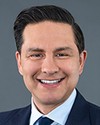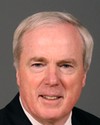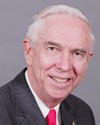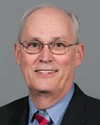Thank you.
Evidence of meeting #12 for Public Accounts in the 39th Parliament, 2nd session. (The original version is on Parliament’s site, as are the minutes.) The winning word was medical.
A recording is available from Parliament.
Evidence of meeting #12 for Public Accounts in the 39th Parliament, 2nd session. (The original version is on Parliament’s site, as are the minutes.) The winning word was medical.
A recording is available from Parliament.
Liberal
Conservative

Pierre Poilievre Conservative Nepean—Carleton, ON
I was dismayed to learn from Mr. Holland's intervention, as well, that we don't have accurate or up-to-date numbers on patient satisfaction within the forces. I was dismayed to learn that, until I turned to point 4.17, in which that data is included in the report. It says here, “According to a patient satisfaction review conducted by National Defence in 2006, more than 85% of those who responded reported that they were satisfied with the health care they received.” That's on page 9.
In 2004, a Canadian Forces health and lifestyle survey found that 83% of members felt their health concerns were addressed at the time of their appointment, and 76% stated they received results of tests and procedures within an appropriate timeframe. More than 80% of members felt that the clinic's hours met their needs.
There's some up-to-date data that might be useful to members of the opposition as they consider the Afghan mission and the position they might like to take in the future.
I have a question around the costs and the administration of military health care. I see here that point 4.36 says that regular-force military physicians range in salary from $207,000 to $231,000--perfectly reasonable. What strikes me as potentially unreasonable is that on the previous page it indicates that 40% of physicians in the military are doing administrative work. That does seem to be an enormous amount of cost for an administrative worker. Having a licence to practise medicine seems like a heck of a lot of qualification necessary for a position in the administration of the system rather than in the direct delivery of health care.
Can you comment on why this is?
BGen Hilary Jaeger
I can start off, and then perhaps other people might want to offer other comments.
I'm one of those 40% of physicians who are considered to be in administrative positions. Most of those 40% are in fact less administrative than my position. You could call them medical supervision, medical policy development, public health related positions. I have an entire directorate devoted to public health.
Similar to a medical officer of health in a city, these people do not see patients on a day-to-day basis. They are busy worrying about issues of public health policy and program implementation.
Conservative

Pierre Poilievre Conservative Nepean—Carleton, ON
Sorry, that does seem to be an extraordinarily high number, though: 40% of your physicians are doing bureaucratic work. I understand there's some role for bureaucracy in administering any program, but 40% of physicians are working as bureaucrats. How can you explain a number that is so large?
BGen Hilary Jaeger
With one exception in my organization, we don't employ physicians in jobs that non-physicians could do. I have one person who's acting as a commander who could be somebody else.
It looks worse from the military point of view. Remember, our baseline is 35% short to begin with. Most of those administrative positions, or medico-administrative positions, are the more senior positions for which we cannot hire a contractor. The contractors are concentrated in the service delivery part of the organization. The supervisory, policy development, and direction positions are almost exclusively uniformed providers.
Conservative

Pierre Poilievre Conservative Nepean—Carleton, ON
Again, allow me to doubt that there's any necessity to have 40% of your physicians in a role of that nature. You've listed policy development and program implementation. All of these things are good, but they're all code for bureaucracy. It would be the priority of the Canadian taxpayer to see that trained physicians who make over $200,000 a year would be on the front lines of providing the gold standard health care to our soldiers instead of working in bureaucratic positions. Perhaps our resources would be better used if that kind of transition were carried out.
MGen Walter Semianiw
If I could just clarify, clearly, General Jaeger's not a bureaucrat. General Jaeger's a leader. Take a look at what many of them have to provide: when I was in Afghanistan with my medical company, my medical officer's time was spent providing leadership, and command-and-control coordination. I agree. Time would have been maybe even, some would say, spent out doing some medical work, being a doctor. But that is fundamental to the success of operations and having a chain of command and a leadership and, more importantly, in having doctors sitting here next to me who are qualified to speak. That, I would submit, is part of the price of doing business in a military; it's part of the price of providing leadership and getting it right in what we've got to do and--
Conservative

Pierre Poilievre Conservative Nepean—Carleton, ON
That's all fair, and “bureaucrat” is not a negative term. There is a need for bureaucracy. But I'm just questioning. That 40% number does seem quite high, but I do take your answer on that.
I see here that $108 million has so far been budgeted for this information system. That's one-fifth of the annual health care budget for the military.
In 4.29 it says that there's still a lack of funding. Why is it that these information systems, whether it's here or with the gun registry or elsewhere, seem to cost so much money?
MGen Walter Semianiw
I'll start off and then turn it over to General Jaeger.
The first thing I would tell you is that I don't think the province of Ontario—I could be wrong—shares its medical information with other provinces and, more importantly, that there's a medical system and an information system in place to do that. That's what we're talking about here. We're talking about a health information system that will be able to go across the country, around the world, and talk to each other. That brings that additional burden, challenge to getting it right.
BGen Hilary Jaeger
I share your frustration with information technology, by the way. I've yet to see it come in on time and on budget.
But that being said, what makes the health information system a unique challenge is that it's not only doing it across provincial boundaries, it's doing it in two official languages and respecting all of the privacy concerns that go with dealing with health data in an electronic manner. It makes it a very expensive proposition.
Conservative

Pierre Poilievre Conservative Nepean—Carleton, ON
Right. The goal, though, is to have up-to-date information all the time, so the left hand knows what the right hand is doing.
But once again to ease the concerns of those who believe they can't decide where they stand on the mission in Afghanistan, over the issue of information we do have some up-to-date information here, as I've cited, on the satisfaction of Canadian soldiers with the health care they're being provided. Some of the more specific data that was sought earlier can be provided to them in about ten days. The goal now is to shorten those timeframes so that information can be provided the same day.
Right now it's not that the data doesn't exist or that it can't be made available. I just don't want that to be used as a pretext for not taking a position on a military mission, because that data is available right now.
BGen Hilary Jaeger
You're absolutely correct. The data is there. It's not really rolled up into the form of useful information or knowledge. Most of the time you have to go to some length to turn data points into usable information at the moment.
Liberal

The Chair Liberal Shawn Murphy
Thank you very much, Mr. Poilievre.
Thank you, Brigadier General Jaeger.
Colleagues, we're now going to go to the second round. It's going to be tight, but we'll try to stick to the five minutes, and I'm going to have to cut you off at five minutes. So keep your questions short and the answers brief and to the point.
Mr. Hubbard, you have five minutes.
Liberal

Charles Hubbard Liberal Miramichi, NB
We'll watch our watch. Thanks, Mr. Chair.
First of all, I'd like to concur with Mr. Poilievre that in terms of 65,000 or 70,000 people, and it costing $108 million or whatever in terms of providing assistance, there must be some regional health authority somewhere that you can draw on. If we look at the Canadian costs of health, if every little regional health authority needed $100 million to provide its data, that certainly would seem to be a tremendous amount of money.
I'd like to first of all be able to recognize that.... You know, I read the audit report in terms of qualifications, in terms of accreditation, in terms of upgrading, and it was rather shocking. I'm glad to hear that the major-general has information for us today to indicate that there has been significant improvement. I'm not sure in terms of pharmacists--there still is a little spread there--but for doctors and nurses and that, it seems you're making considerable improvements.
Now, if we go back to when I was in the service, we had an old system known as PULHEMS. It dealt with people who entered and who were assessed in terms of their medical proficiencies. The “M” was for mental health.
Today we have a lot of soldiers, sailors, and air people leaving the forces, and if we were to look at them today, would there be any indication of a serious concern with a change in M--for example, people coming in assessed as M-1, using the old system, going out as an M-4 or an M-5, and needing medical attention in the civil society? Do you have any information or any data on that?
BGen Hilary Jaeger
You were trained in the British system, because PULHEMS--or it may have been in the Canadian army at the time--is still in use in the British army.
We do not codify our people according to that same approach. We do not split out mental health from any other aspect of health.
Liberal

Charles Hubbard Liberal Miramichi, NB
--but I'd be very dismayed, Mr. Chair, if there weren't a similar system to assess people's mental health today.
BGen Hilary Jaeger
There is a system that assesses people in terms of vision, colour vision, hearing--a geographic factor that says where they can go and how far away from medical support they can be, an occupational factor in terms of what they do, and an air factor for suitability for operational jobs in the air force. But there is no separate coding for mental health over other health factors.
Liberal

Charles Hubbard Liberal Miramichi, NB
So really, you're saying to our committee today that there has been no method of addressing this. Because sooner or later we're talking about veterans, and when those veterans go to look for benefits, they must have certain medical evidence to indicate what they encountered, the problems they had when serving, and whether or not, by someone's assessment, they have good mental health when they leave or whether their mental health deteriorated during the time they were in service.
There must be some evidence within your organization today to indicate that people have had mental problems, that they've seen psychologists, that they've seen psychiatrists, that they've seen social workers, and that when they're trying to go back into civil life and they have a history that was created by the military...because you know, as I said before, that when they entered they were classified as M-1, under that old British system, and left as an M-4.
BGen Hilary Jaeger
Every encounter with the health services system is documented on an individual's medical record. When you leave the service, you have a release medical exam that specifically does seek to compare and contrast your state when you started with your state when you left. And that would include mental health issues. The only difference is that there is no number code that describes that.
When you talk about transition concerns, sir, we do have challenges with transition. We've worked a lot with Veterans Affairs Canada toward making our mental health clinics interoperable, because it can be very difficult to effect a good hand-off between somebody who is a serving member of the Canadian Forces one day and is a veteran the next day. There's not always the same level of services available to both halves in the same city. So we keep working to move that forward.
MGen Walter Semianiw
If I can expand a little bit, something you need to be aware of, as I touched on earlier just as a side piece, is called the transition interview. The critical question is how you connect the soldier, sailor, airmen, and airwomen as they leave the force and do this transition that General Jaeger talks about in an efficient and effective way. It's called the transition interview.
What happens now, usually six months prior you meet someone from Veterans Affairs who does an interview with you. They go through what you need, what's happening, what challenges you have, and that information they will get from us on the military side for those soldiers, sailors, airmen, and airwomen who transit to Veterans Affairs, where they would be called clients. The information is passed from one department to another and there are a lot of linkages between the two to ensure there is a transition.
Second, to ensure the policies are the same--and that's the challenge, that there's no gap between the two--we have been working on harmonizing the two. The policies on the military side you'll see for mental health, the M-1 and M-4 challenge, you'll get the same support on the medical side. That's why it was decided a number of years ago to establish operational stress injury clinics in Veterans Affairs. They mirror very much the same set-up that we have in the military. So there is something very similar as part of Veterans Affairs that our soldiers, sailors, airmen, and airwomen actually transit to if they have a mental health challenge.
Liberal
Conservative

Brian Fitzpatrick Conservative Prince Albert, SK
Thank you, Major General and General Jaeger.
References have been made to bureaucrats. We see a lot of bureaucrats on this committee, but neither of you sound like bureaucrats. Your answers seem to be quite different from what we normally get here, so I want to commend you for the information you're giving us.